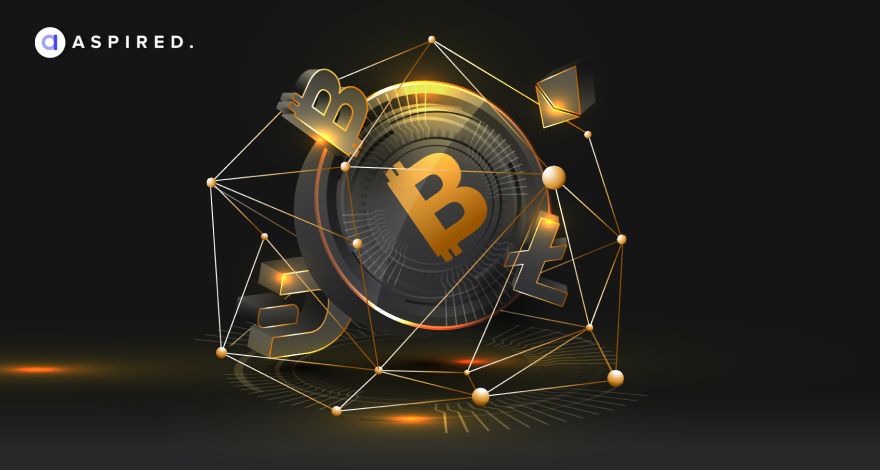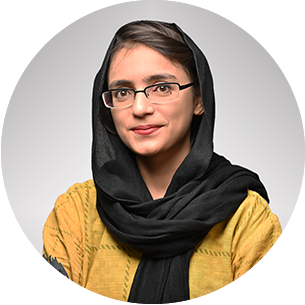Suppose, for a moment, you’re at a neighborhood bakery, the tantalizing aroma of fresh bread wafting around you. You have chosen a crusty baguette and a box of decadent pastries. But, as you reach to pay, you find that your card is declined, or worst, your banking system is down, stalling all transactions.
In this case, wouldn’t it be nice to have an instantaneous payment system, costs you little to no transaction charges and is perhaps outside of the banking system? Imagine if the bakery has an immediate, up-to-date record of your account balance independent of your bank’s operations system. Your balance is adjusted with every purchase, ensuring no hiccup in your bank account can stand between you and your warm delights. Sound too good to be true?
Well, this is a potential reality offered by Blockchain or distributed ledger technology. A concept that has been around for quite some time now but has gained prominence in the decade or so and is often touted as the next big thing in the tech world. It is a powerful force that is already reshaping the world we are living in! It holds the key to a future where transparency, security, and efficiency reign supreme.
Let’s witness the tangible impacts blockchain is making in our everyday life.
How is blockchain technology changing the world?
Numerous enterprises and companies are already implementing their version of the blockchain. However, no one can predict the future of this tech. This blog post will explore how blockchain is making an impact in our world.
You probably know Blockchain is a decentralized technology, but what does that mean exactly? Let’s start with the difference between centralized and decentralized systems.
|
Centralized System |
Decentralized System |
|
Power and control reside in a single entity or authority. |
Power and control are shared among multiple participants. |
|
The central authority makes decisions. |
Decisions are reached through an agreement among participants. |
|
Vulnerable to failures and censorship, with a risk of relying on a single point. |
Resilient to failures and censorship, with no single point of vulnerability. |
|
Example: Traditional banking systems where a central bank regulates and controls the currency and financial transactions. |
Example: Cryptocurrencies like Bitcoin and Ethereum, where transactions and records are verified and maintained by a network of participants without a central authority. |
Key Features of Blockchain Technology
But before delving into the detail of the topic, we understand that many still find words like blockchain, distributed ledger, and crypto pretty confusing. So, if you are a non-tech reader or need a refresher, here are the simplified key aspects that define blockchain technology the most.
Peer-to-Peer Network: Blockchain is a P2P network that allows computers over a network to work together. Devices that are already on the network participate alongside new devices to carry out network operations.
Distributed Ledger: Blockchain enables peers to have a copy of the ledger. It allows peers to validate the information without relying on a centralized authority. This is one of the best features of the blockchain that ensures no fraud occurrence.
Cryptographic Hash: Blockchain utilizes a secure function that encrypts data and prevents unauthorized access. The hash function takes an input and then generates an output value. It is a one-way function that ensures hackers cannot easily determine the original output value.
Immutable means: that once the data is stored on the blockchain, it cannot be altered or tempered without the original user’s permission.
Pseudonymity: Users can stay anonymous within the blockchain if they want to.
While the above mention technical aspect of blockchain technology is groundbreaking, it’s essential to consider how it improves regular people’s lives. When we talk about changing the world, we anticipate its positive impacts on the lives of everyday individuals. Here we will shed light on the general implications of blockchain and its impact on the economy.
Streamline Payment Process with NO Third Parties.
The process is usually burdensome and expensive when paying a developer in India from a German bank account. Individuals in India typically face challenges when it comes to IBAN wire transfers. The convenience associated with IBAN wire transfers isn't universally accessible through all Indian banks, which often leaves individuals with no choice but to navigate through the intricate SWIFT system, accompanied by a mountain of paperwork. To mitigate these challenges utilizing the third-party payment platforms offered by global fintech companies is recommended, which entails undergoing a protracted know-your-customer procedure. In many cases, when the payment exceeds $1000, the funds may even become temporarily frozen, prompting the recipient to endure a probing questionnaire to justify a salary received. The individual is left at the mercy of authorities, awaiting their hard-earned income's approval.
While blockchain is a payment solution, it makes payment as casual as sending a text message. Blockchain powers crypto and offers a decentralized source of information. It facilitates direct communication between the two parties involved in a transaction. As a result, both parties have visibility into the payment process. It allows the trading of digital currency globally without the need for intermediaries, regulators, government, or any third party. It also eliminates transaction fees; you only incur the expenses necessary to finalize a transaction.
Everyone Can Hold Digital Currencies on Their Cellphones
With the technological advancements and the widespread adoption of crypto, Individuals from all walks of life can now seamlessly engage with the global digital economy.
Talent worldwide increasingly opts to receive their salaries in USD stablecoins. A staggering 38% of freelancers in the Web3 space have recognized the benefits of crypto assets and prefer to be compensated in this form. One primary reason behind this growing trend is the higher inflation rates experienced by many local currencies. Such as Iranian or Sudanese professionals who witness their national currency grapple with an official inflation rate. To safeguard against this loss, professionals receive their payments as stablecoins to ensure that their earnings remain unaffected by local currency fluctuations. Furthermore, by keeping their funds in a secure mobile wallet, such as Metamask or a Hardware e-wallet, they have direct control over their crypto assets and can access them conveniently.
Furthermore, a professional can enjoy the flexible approach. In situations when they require immediate access to their local currency, they can easily convert the received stable coins into their flat currency using a local crypto exchange. This instantaneous conversion allows them to deposit the funds into their bank account within minutes, ensuring they can seamlessly integrate their earnings into their day-to-day financial activities.
Earning A Living as A Remote Worker Through Gaming NFT
NFTs, or nonfungible tokens, are digital tokens that represent a unique physical asset like property. We are witnessing the emergence of new markets allowing people to make a living in ways no one could have imagined in the past. A remarkable example is NFT-based games such as Axie Affinity, which has experienced tremendous growth in its user base over the past few years. It is attracting a million users worldwide.
These players engage in the game by participating in activities such as farming in-game currency and collecting virtual items, which they can then sell to other players globally at a higher price. This exchange enables players to progress faster while providing a source of income worldwide. In addition, this allows people to pursue a remote occupation that merely requires a laptop and an internet connection.
How Blockchain is Shaping the Industries: Real-world Examples
Blockchain impacts how we trade, secure data, interact, and more. There are numerous real-world examples. Let’s discuss a few here.
Supply Chain
Brilliant Earth uses blockchain to track the origin and journey of diamonds, providing customers with complete chain of custody information.
FFF Enterprises uses blockchain to verify the return of saleable drugs, complying with regulations and preventing counterfeit products from re-entering the supply chain.
Bumble Bee Seafoods utilizes blockchain to enable consumers to trace the journey of yellowfin tuna, promoting transparency and fair-trade practices.
Financial Services
ABRA holds and tracks balances using Bitcoin blockchain
Barclays implements blockchain for transactions and fraud prevention
Maersk streamlines marine insurance with blockchain.
Government
Dubai aims to become a blockchain-powered state
Estonia moves public records to the blockchain
South Korea Samsung develops blockchain solutions for public safety and transport in South Korea.
Healthcare
Gem tracks disease outbreak data onto a blockchain, enhancing disaster relief effort
SimplyVital Health develops patient record and progress-tracking solutions using decentralized patient records.
MedRec manages electronic medical records and data sharing using blockchain
Manufacturing
Provenance ensures supply chain transparency through blockchain provenance records.
Jiocoin develops a blockchain logistics platform
Hijro enables collaboration on prototyping and proof of concept collaborations using blockchain.
Retail
Blockpoint.io builds payment systems and loyalty schemes around blockchain currencies.
OpenBazaar offers decentralized trading
Loyyal revolutionizes loyalty rewards through blockchain technology
Transport and Tourism
IBM explores blockchain initiatives Arcade City competes with Uber using blockchain Webjet tracks and trades hotel room vacancies using blockchain
Charity
Bitgive provides a transparent solution using blockchain for charity donations, linking giving with project outcomes.
Education
Learning Machine and MIT: Education is another area where blockchain is beneficial. In partnership with MIT, Learning Machine has developed Blockcerts, a blockchain-based system for issuing verifiable digital certificates. These certificates can be diplomas, professional certifications, or other accreditation.
The above examples illustrate the vast potential of blockchain technology across various sectors, promising transformative capabilities.
The Future of Blockchain: Challenges and Opportunities
Blockchain technology, while promising, faces significant challenges, such as
- The lack of public understanding and trust hampers widespread adoption
- Regulatory hurdles due to its decentralized nature conflict with traditional frameworks
- Scalability issues limit its transaction processing capacity
Yet opportunities are immense
- Decentralized identity systems using blockchain could revolutionize privacy and data security
- Voting systems can be more transparent, secure, and accessible
- Financial services could democratize access to resources globally with DeFi
- Blockchain supply chain transparency can open up vast possibilities for decentralized apps
Blockchain’s future is laden with potential, contingent on overcoming present challenges. Moreover, its evolution will define how we transact and interact in years to come.
Summing up
Blockchain is like a rising star in the technology universe – a bit elusive. Still, once it takes center stage, it promises a performance like no other, leaving ripples across industries.
However, every rising star faces challenges- scalability issues, regulatory guidelines, and gaining the trust of its audience. Experience the brilliance of Aspired as we bring together a talented team of blockchain developers who unlock the true potential of this revolutionary technology. Join us on this remarkable journey and together, we'll create a masterpiece that shines bright in every moment, surpassing expectations and setting new standards in the world of technology.

 Clients
Clients
 Processes
Processes
 Blog
Blog










